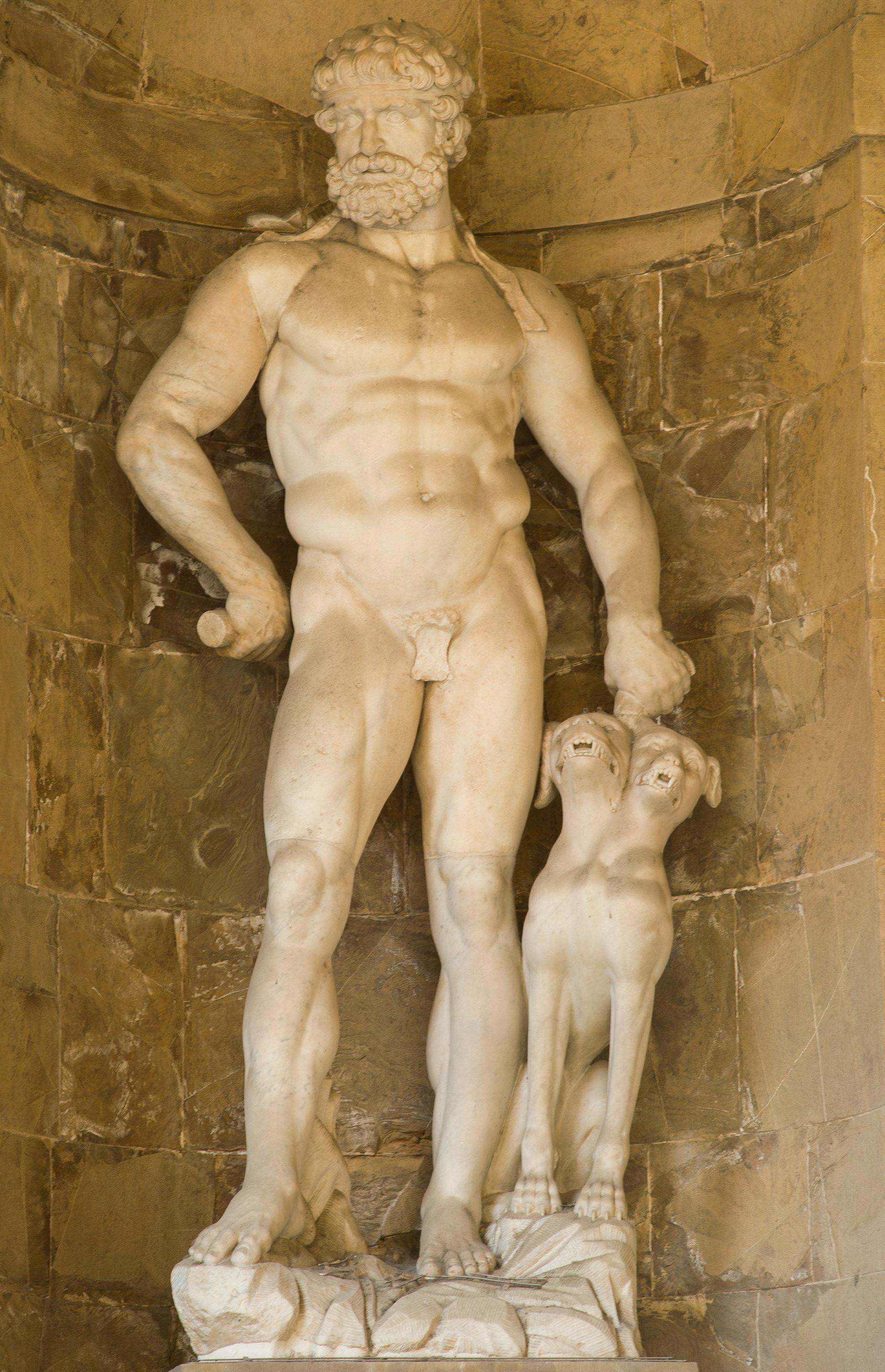Hercules and Cerberus
Roman art
The work is in the form as recreated by sculptor Giovansimone Cioli, who was able to recognise a depiction of Hercules in the vigorous model of a truncated figured, which arrived in Florence in 1564, consisting of just a torso and the upper legs. Cioli’s restoration correctly interpreted the anatomical layout and reconstructed the position of the arms and head of the hero in a way that was quite close to the ancient model. The surviving fragment can be identified with certainty in a copy of the so-called “Lenbach” Hercules - from the name of the collector who, in the late 19th century, donated a replica of the head to the Glyptothek of Munich - a specimen statue created at the end of the 4th century B.C. and known for the large amount of copies that testify to the immense fortune of imperial Rome. The peculiar anatomical definition, with well marked muscles, dates the Florentine replica to the first half of the second century A.D. The need to give the imposing figure a support also allowed the sculptor-restorer to add an element that would not have been recognisable by interpreting the ancient fragment - the figure of Cerberus, terrible three-headed dog who, according to myth, guarded the entrance to the underworld. Although this choice was made by Cioli, the addition of this element is motivated by the story of Hercules, since the capture of Cerberus is mentioned in ancient sources as one of the hero’s famous twelve labours. Compared to other depictions of Hercules in the courtyard at Pitti Palace and placed here in the 16th century by Grand Duke Cosimo I, this sculpture came to its place far later, in the mid 18th century, after periods in the Nicchie Room in Pitti Palace, in the Boboli Gardens and in the Uffizi Gallery.
V. Saladino in G. Capecchi, D. Heikamp, A. Fara, V. Saladino, Palazzo Pitti. La reggia rivelata, Catalogo della mostra (Firenze, Palazzo Pitti, 7 dicembre 2003-31 maggio 2004), Firenze 2003, p. 484, n. 6
